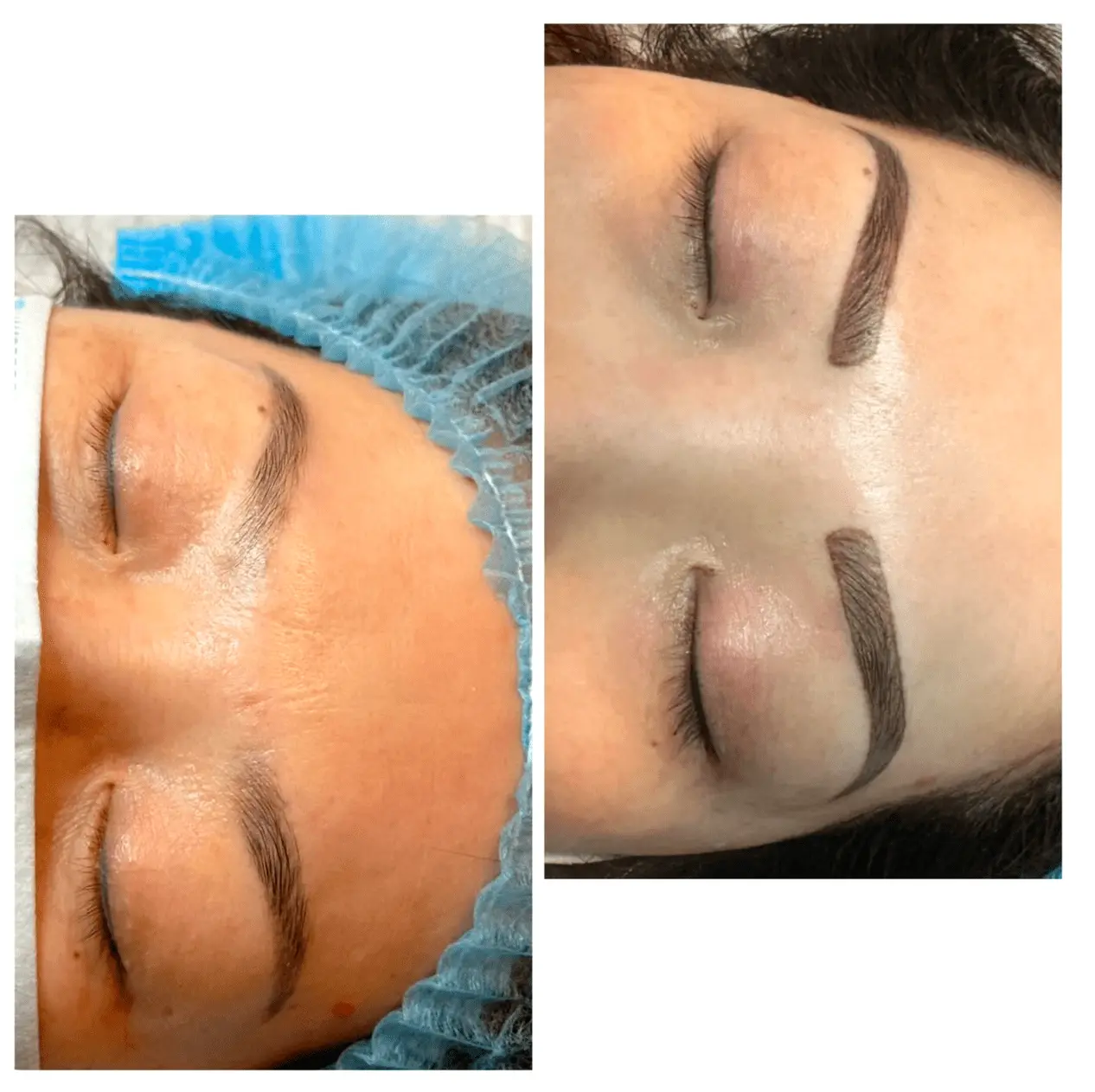Saline tattoo removal is a non-invasive method that uses a saline solution to lift tattoo pigment out of the skin, effectively removing unwanted tattoos.

Learn about saline tattoo removal
Saline cosmetic tattoo removal/lightening is a non-laser method that utilizes a saline solution to fade or eliminate unwanted cosmetic tattoos. It is also referred to as saline tattoo removal, saline tattoo lightening, or saline tattoo extraction.
The saline solution used in tattoo removal procedures is a mixture of sterile water and medical-grade salt. Applying over the old tattoo creates a hypertonic solution that helps draw the ink particles to the skin’s surface for removal through the body’s natural healing process. This gradual process results in the lightening or fading of the tattoo, making it easier to cover up or remove entirely.
Saline tattoo removal is considered a safe and effective option for those with sensitive skin or tattoos in sensitive areas like the face, neck, or hands. It is believed to be less painful and has fewer side effects than laser tattoo removal, such as scarring, blistering, and discolouration.
How does saline tattoo removal work?
Saline draws water containing pigment up to the skin’s surface, removing it through scabbing. Unlike laser removal, which pushes pigment back into the body, saline removes pigment by moving it up and out of the skin. Saline can remove all colours, including white, and is not limited by depth, meaning it can target and lift pigment regardless of its depth in the skin.
The saline tattoo removal process Involves creating a hypertonic solution that draws pigment from the skin. This solution is injected into the skin using a fine needle, causing controlled damage that allows the saline solution to penetrate the skin and remove the pigment.
Advantages
Saline tattoo removal method is a safe and effective non-invasive method for removing unwanted cosmetic tattoos. It is less painful than other tattoo removal methods and carries a lower risk of complications.
Risks and side effects
Saline tattoo removal treatment typically results in temporary redness, swelling, and mild discomfort for some individuals. In rare instances, there may be scarring or skin discolouration.
During the procedure
The area will be cleaned and numbed with a local anesthetic during the tattoo removal procedure. A saline solution is then injected into the skin using a fine needle. The procedure’s duration varies, typically 30 minutes to an hour, depending on the tattoo’s size.
Guidelines for post-treatment care following saline cosmetic tattoo removal
- Following the procedure, it is essential to maintain cleanliness in the area. Keeping the area clean and dry for the initial days is advised. Refrain from touching or rubbing the area to minimize the risk of infection. If needed, gently clean the area with mild soap and water.
- Avoiding sun exposure after treatment is essential, as it can lead to irritation and increased risk of scarring. Protective clothing or sunscreen should be used to shield the area from the sun’s harmful rays.
- Refraining from strenuous activities that could lead to sweating or rubbing on the treated area is recommended, as this may result in irritation and impede the healing process.
- Avoiding hot showers and baths for the initial days following the procedure is recommended, as this can lead to irritation and an increased risk of infection.
- During the healing process, scabs may form on the treated area. It is important to avoid picking at these scabs to prevent scarring and allow for a faster healing process.
- Contact your healthcare provider for any questions or concerns regarding the healing process. They can offer additional guidance on aftercare and ensure proper healing of the treated area.

Can saline removal remove eyeliner and lip tattoos?
Saline tattoo removal can effectively remove eyeliner and lip tattoos by injecting a saline solution into the skin to lift and remove the pigment. This non-invasive method is gentle and suitable for delicate areas.
In saline tattoo removal, a technician injects a specialized solution into the skin surrounding the tattoo. This solution breaks down the pigment, allowing the body’s immune system to remove it gradually.
Saline tattoo removal is a gradual process that may require multiple treatments for complete removal. The effectiveness of the treatment can be influenced by factors such as the type of ink used, the depth of the tattoo, and other variables. Consulting with a skilled tattoo removal technician is recommended to determine the most suitable treatment plan for your needs.
The effect of skin type on the removal of cosmetic tattoos
Skin type plays a significant role in the effectiveness of saline cosmetic tattoo removal, with two key factors to consider.
The thickness of the skin can impact how well the saline solution can penetrate it. Thicker skin may be more complicated to penetrate, making tattoo pigment removal more challenging. On the other hand, thinner skin may be more susceptible to damage from the saline solution, leading to potential scarring or other adverse effects.
The effectiveness of saline tattoo removal can be affected by skin colour. Darker skin tones may absorb some saline solution, reducing its effectiveness. Darker skin can also be more prone to scarring or discolouration after the treatment.
Various body areas have different skin thicknesses and colours, affecting the effectiveness of saline tattoo removal. Tattoos on hands or feet may be challenging to remove due to the thicker skin in those regions.

The success of saline cosmetic tattoo removal may be influenced by skin type, so it is advisable to seek guidance from a qualified technician to determine the most suitable treatment plan for your specific skin type and tattoo.